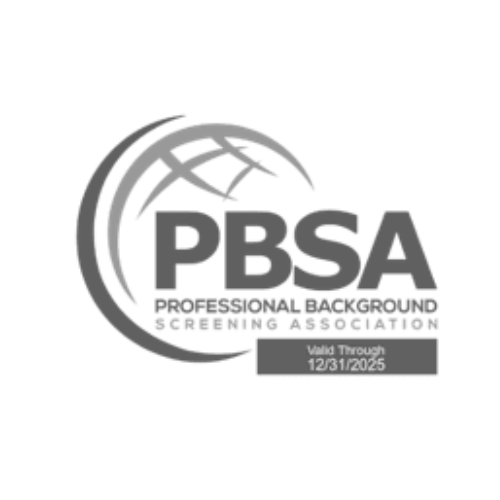Last month, I received a call from an HR director who discovered that their “streamlined” background check process had been missing critical verifications for six months. The gap wasn’t discovered until a workplace incident forced them to review their hiring documentation. The result? Legal exposure, insurance complications, and a complete overhaul of their verification system.
The worst part? This could have been prevented with a simple 15-minute audit that would have caught the problem before it became a crisis.
Most organizations assume their background check processes are working correctly until something goes wrong. But by then, it’s too late. The good news is that you can identify most compliance vulnerabilities in just 15 minutes with the right framework.
Here’s exactly how to conduct a rapid background check audit that will expose your biggest risks before they expose you.
Why Traditional Audits Miss the Mark
Most background check audits are either too comprehensive (taking weeks to complete) or too superficial (checking only basic compliance boxes). Neither approach gives you the actionable intelligence you need to prevent problems.
A comprehensive audit might review every background check from the past year, analyze statistical trends, and produce a 50-page report. But by the time you finish this analysis, you’ve missed months of potential issues. Meanwhile, a superficial audit might confirm that you’re conducting background checks but miss critical gaps in scope, timing, or quality.
The 15-minute audit strikes the perfect balance. It’s focused enough to complete quickly but comprehensive enough to catch the issues that matter most. This approach is based on a simple principle: 80% of background check problems stem from 20% of process failures.
The Four-Quadrant Audit Framework
The most effective rapid audit examines four critical areas where background check failures typically occur:
- Process Compliance – Are you following your own procedures?
- Scope Adequacy – Are you checking the right things?
- Quality Control – Are you catching errors and discrepancies?
- Documentation Standards – Can you prove you did everything correctly?
Each quadrant takes approximately 3-4 minutes to audit, giving you a complete picture in 15 minutes or less.
Quadrant 1: Process Compliance (4 minutes)
Start by examining whether your actual practices match your documented procedures. This is where most organizations discover their first major gap.
Quick Check #1: Timing Verification (1 minute)
Pull the last 10 background checks completed. For each one, note:
- Date of conditional job offer
- Date background check was initiated
- Date results were received
- Date final hiring decision was made
Red Flag: Any background check initiated before a conditional offer was made, or final hiring decisions made before results were received.
Quick Check #2: Consent Documentation (1 minute)
Review the same 10 files for proper consent documentation:
- Standalone consent form (not buried in application)
- Clear disclosure of background check intent
- Candidate signature and date
- Proper FCRA language if using third-party provider
Red Flag: Missing signatures, combined consent/application forms, or outdated FCRA disclosures.
Quick Check #3: Adverse Action Procedures (2 minutes)
Identify any cases where background check results led to hiring decisions being reconsidered:
- Pre-adverse action notice sent
- Required waiting period observed
- Final adverse action notice sent if applicable
- Copy of background check report provided
Red Flag: Immediate rejections without proper adverse action procedures, or missing documentation of the process.
Quadrant 2: Scope Adequacy (4 minutes)
This quadrant examines whether you’re conducting the right types of verification for each position.
Quick Check #4: Position-Risk Alignment (2 minutes)
Create a simple matrix of your most common positions and the background checks you conduct for each:
| Position Type | Criminal | Employment | Education | Credit | References |
|---|---|---|---|---|---|
| Office Admin | ✓ | ✓ | ? | ? | ✓ |
| Sales Rep | ✓ | ✓ | ? | ✓ | ✓ |
| Warehouse | ✓ | ? | ? | ? | ? |
Red Flag: Inconsistent verification scope for similar risk levels, or obvious gaps (like skipping employment verification for customer-facing roles).
Quick Check #5: Industry-Specific Requirements (1 minute)
Verify that you’re meeting industry-specific verification requirements:
- Healthcare: OIG exclusion list checks, license verification
- Financial services: Credit checks, FINRA requirements
- Transportation: DOT requirements, driving record checks
- Education: Child abuse registry, education verification
Red Flag: Missing industry-required verifications or outdated compliance understanding.
Quick Check #6: Geographic Coverage (1 minute)
Review whether your criminal background checks cover appropriate jurisdictions:
- Current residence location
- Previous residence locations (typically 7-10 years)
- Employment locations
- Federal databases
Red Flag: Gaps in geographic coverage, especially for candidates who have moved frequently or worked in multiple states.
Quadrant 3: Quality Control (4 minutes)
This quadrant focuses on whether you’re catching and properly handling discrepancies and red flags.
Quick Check #7: Discrepancy Management (2 minutes)
Look for cases where background check results didn’t match candidate-provided information:
- Employment dates that don’t align
- Education credentials that couldn’t be verified
- Name variations or identity discrepancies
- Criminal records that weren’t disclosed
Red Flag: Discrepancies that were ignored or inadequately investigated, or lack of documented decision-making process for handling discrepancies.
Quick Check #8: Red Flag Response (1 minute)
Identify how your organization responds to common red flags:
- Criminal convictions related to job duties
- Employment gaps or terminations for cause
- Failed drug tests or license suspensions
- Negative reference feedback
Red Flag: Inconsistent responses to similar red flags, or lack of clear criteria for evaluating concerning information.
Quick Check #9: Provider Quality Assessment (1 minute)
If using third-party background check providers, evaluate their performance:
- Turnaround times meeting expectations
- Accuracy of information provided
- Completeness of searches conducted
- Responsiveness to questions or issues
Red Flag: Frequent delays, incomplete reports, or poor communication from your background check provider.
Quadrant 4: Documentation Standards (3 minutes)
The final quadrant examines whether you can demonstrate compliance if your hiring decisions are challenged.
Quick Check #10: File Completeness (1 minute)
Review personnel files for background check documentation:
- Original consent forms
- Complete background check reports
- Documentation of decision-making process
- Adverse action notices if applicable
Red Flag: Missing documentation, incomplete files, or inability to locate background check records.
Quick Check #11: Retention Compliance (1 minute)
Verify that you’re retaining background check records for appropriate periods:
- FCRA requires 2 years for consumer reports
- EEOC requires 1 year for hiring records
- State laws may require longer retention
- Industry regulations may have specific requirements
Red Flag: Premature destruction of records or lack of systematic retention procedures.
Quick Check #12: Access Controls (1 minute)
Ensure that background check information is properly secured:
- Limited access to authorized personnel only
- Secure storage (physical and electronic)
- Proper disposal procedures for outdated records
- Training for staff who handle sensitive information
Red Flag: Unsecured storage, excessive access permissions, or lack of disposal procedures.
Industry-Specific Red Flags to Watch
Different industries face unique background check challenges. Here are the most common red flags by sector:
Healthcare Organizations
- Missing OIG exclusion list checks
- Expired professional license verifications
- Inadequate child/elder abuse registry searches
- Insufficient drug testing protocols
Financial Services
- Skipped credit history checks for financial roles
- Missing FINRA registration verifications
- Inadequate fraud history investigations
- Insufficient regulatory compliance checks
Education Sector
- Missing child abuse registry searches
- Inadequate education credential verification
- Insufficient reference checks with previous schools
- Missing fingerprint-based criminal checks where required
Technology Companies
- Insufficient intellectual property violation checks
- Missing social media screening for public-facing roles
- Inadequate verification of technical certifications
- Insufficient investigation of non-compete violations
Retail and Hospitality
- Missing theft-related criminal history checks
- Insufficient employment verification for cash-handling roles
- Inadequate drug testing for safety-sensitive positions
- Missing customer interaction reference checks
Creating Your Action Plan
Once you’ve completed your 15-minute audit, you’ll likely have identified several areas for improvement. Here’s how to prioritize your response:
Immediate Actions (Complete within 24 hours)
- Fix any active compliance violations
- Address missing documentation for recent hires
- Correct any ongoing adverse action procedure failures
- Secure any unsecured background check information
Short-term Improvements (Complete within 30 days)
- Update procedures to address identified gaps
- Train staff on proper background check procedures
- Implement quality control measures
- Strengthen provider relationships if needed
Long-term Enhancements (Complete within 90 days)
- Develop position-specific verification protocols
- Implement systematic audit procedures
- Enhance documentation and retention systems
- Create comprehensive staff training programs
Building Continuous Monitoring
The 15-minute audit is most effective when conducted regularly rather than as a one-time exercise. Consider implementing:
Monthly Spot Checks: Review 5-10 recent background checks for compliance with your procedures.
Quarterly Process Reviews: Examine whether your verification scope remains appropriate for your risk profile and industry requirements.
Annual Comprehensive Audits: Conduct a more thorough review of your entire background check program, including statistical analysis and trend identification.
Trigger-Based Reviews: Audit your processes whenever you experience a workplace incident, receive a legal challenge, or make significant changes to your hiring procedures.
Technology Tools for Ongoing Monitoring
Modern background check platforms often include built-in audit capabilities that can automate much of this monitoring:
Compliance Dashboards: Real-time visibility into completion rates, turnaround times, and compliance metrics.
Exception Reporting: Automated alerts when background checks don’t meet your standard procedures or timelines.
Documentation Tracking: Systems that ensure all required documentation is collected and properly stored.
Audit Trails: Comprehensive logs of all background check activities for compliance demonstration.
The Cost of Inaction
Organizations that skip regular background check audits often discover problems only when they become expensive. Consider these real-world consequences:
Legal Liability: A manufacturing company faced a $2.3 million negligent hiring judgment because they couldn’t demonstrate that they had conducted appropriate background checks for a safety-sensitive position.
Regulatory Penalties: A healthcare organization received $150,000 in fines for failing to conduct required OIG exclusion list checks, discovered during a routine compliance audit.
Insurance Issues: A retail chain had their liability coverage questioned after a theft incident involving an employee whose background check had missed relevant criminal history.
Operational Disruption: A technology company had to re-screen 200+ employees after discovering their background check process wasn’t meeting industry standards, costing over $50,000 in direct expenses plus significant management time.
Making the Audit Routine
The key to effective background check auditing is making it routine rather than reactive. Here’s how to build this into your regular operations:
Assign Ownership: Designate a specific person responsible for conducting regular audits and following up on findings.
Schedule Consistently: Put audit dates on your calendar and treat them as non-negotiable appointments.
Document Everything: Keep records of your audit findings and corrective actions to demonstrate continuous improvement.
Share Results: Brief leadership on audit findings and improvements to maintain organizational commitment to compliance.
Celebrate Success: Recognize when audits show improvement or catch potential problems before they become issues.
Beyond Compliance: Strategic Value
While the primary goal of background check auditing is compliance, organizations that do it well often discover additional benefits:
Improved Hiring Quality: Regular audits help you identify which verification methods are most predictive of employee success.
Enhanced Risk Management: Systematic review of background check results can reveal patterns that inform broader risk management strategies.
Operational Efficiency: Audits often identify process improvements that reduce time-to-hire while maintaining quality.
Competitive Advantage: Organizations with robust verification processes can often hire more confidently and quickly than competitors.
Your Next Steps
Don’t wait for a problem to discover gaps in your background check process. Set aside 15 minutes this week to conduct your first rapid audit using this framework.
Start with Quadrant 1 (Process Compliance) since this is where most organizations find their biggest gaps. If you discover significant issues, address them immediately before moving to the other quadrants.
Remember, the goal isn’t perfection—it’s continuous improvement. Each audit should make your process a little stronger and your organization a little safer.
The 15 minutes you invest in auditing today could save you months of problems tomorrow. Your future self will thank you for catching issues before they catch you.
Ready to strengthen your background check process? Contact AMS Inform for a comprehensive review of your verification procedures and customized recommendations for improvement.
References: Background Screening Compliance Checklist – HireSafe Common Red Flags on Background Checks – PSI Services HR Compliance Audit Checklist – SHRM















